June 16, 2025 | 21:41 GMT +7
June 16, 2025 | 21:41 GMT +7
Hotline: 0913.378.918
June 16, 2025 | 21:41 GMT +7
Hotline: 0913.378.918
Nhon Trach is a locality that has the largest agricultural land, especially brackish water surface area in Dong Nai province. In the previous years, agricultural production of the people faced many disadvantages due to saline intrusion and alum contamination, leading to low productivity. But now, the district has built many concentrated production areas both adapting to climate change and improving land use efficiency such as those in aquaculture, fruit tree planting, lotus cultivation, etc.
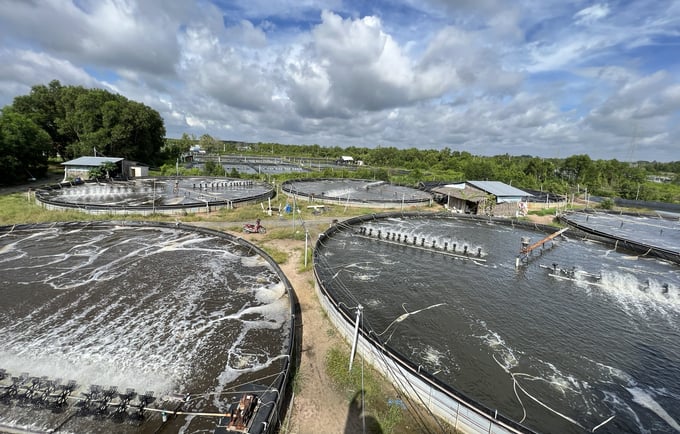
High-tech shrimp farming area in Phuoc An commune, Nhon Trach district. Photo: Tran Trung.
Coming to riverside communes such as Vinh Thanh, Phuoc An, Phuoc Khanh and Long Tho, it is easy to find high-tech shrimp ponds installed with full modern equipment and wheels carrying oxygen to push around and release foam over the water surface. Local farmers are very happy to work on shrimp ponds which used to be their rice fields and sugarcane but now become high-tech shrimp areas bringing them an income worth billions of dong/ha/year.
Visiting Phuoc An commune, asking about Mr. Nguyen Huy Binh's high-tech shrimp farm, everyone knew him because of his reputation as one of the people who brought brackish water shrimp from the western region to grow here successfully. Not only enriching himself, Mr. Binh also actively applied technical advances to production, and boldly shared his experiences with local farmers to get rich like him .

Mr. Binh and members of Thanh Cong Cooperative work on the shrimp ponds. Photo: MS.
Mr. Bình met us at his shrimp pond when it was getting dark, but he was still busy checking each shrimp basket and the health status of each shrimp. Binh said he was born in the coastal province of Tien Giang and came to Dong Nai to start a business when he was in his twenties. The luggage he brought with him beyond his youth was "one belly" of experience in aquaculture.
He realized Nhon Trach in general and Phuoc An commune in particular has an ideal salinity for shrimp farming but no one exploited it yet. After accumulating a certain amount of capital, he embarked on a brackish water shrimp farming model.
"I invested according to the motto 'take short to raise long', initially only a few hundred square meters of rice land for trial farming, then every time I "hit" a profit, I buy land to build a new pond. Currently, I own 10 ponds (200m2/pond) and co-operate with my friends to invest in 9 others so totally I have 19 ponds for whiteleg shrimp raising," said Binh.
Mr. Binh added that finding him doing business effectively, in recent years, many locals have also followed him. However, when the shrimp ponds density is thicker, the disease will increase. He has gradually switched to a high-tech shrimp farming model since he found traditional farming with many potential risks.
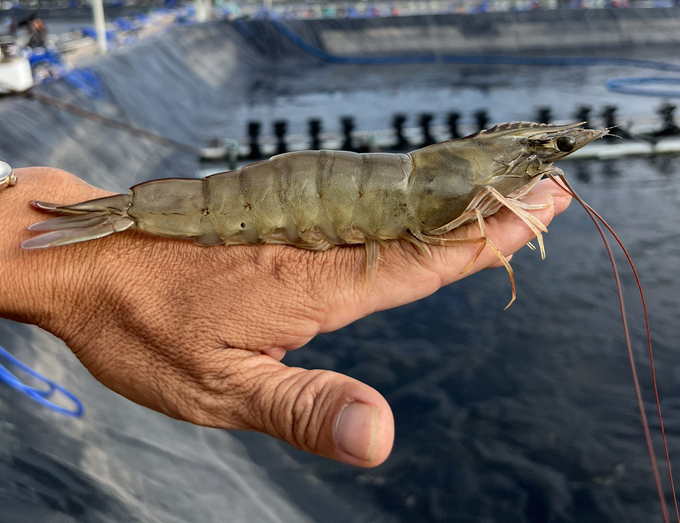
Brackish water shrimp grow and develop healthily on Nhon Trach land. Photo: Tran Trung.
“If in the past, following traditional shrimp farming methods, farmers used to spend 70% of the area for raising and the remaining 30% were used for water treatment. But with the current high-tech farming model, it is quite the opposite, farmers will spend up to 70% of the area to treat water sources and only 30% for raising shrimp.
In addition, to produce a finished shrimp crop, it takes 2-3 stages of between 20 to 30 days each to release shrimps with a density from 250-300 shrimp/m2. With this conversion, shrimp productivity is 3-4 times higher than that of earthen pond culture. On average, this model can allow farmers to raise 4 crops per year, not just 2 crops like they did with traditional farming methods.
Sharing about his experience in handling shrimp diseases, Binh said that in high-tech shrimp farming, disease risks are also better controlled (such as intestinal diseases, rapid death, white spots...) and When an epidemic occurs, it is easier to handle.
“Since applying the farming model in the direction of high technology, the effectiveness is quite obvious, if you get favorable conditions for 1 crop, after 2 months, it is possible to harvest an output of 4-5 tons with a profit from VND200 to VND250 million," Binh said excitedly.
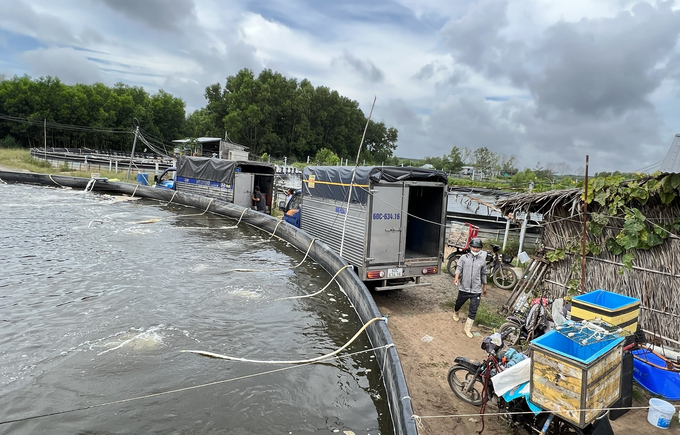
Whenever shrimp is harvested, partners come straight to the place to buy it. Photo: Tran Trung.
Head of the Economic Division of Nhon Trach district Nguyen Van Nhan said the total area of shrimp farming in the district is nearly 1.7 thousand hectares, mainly concentrated in two communes of Phuoc An and Vinh Thanh, of which hundreds of hectares have been intensively applied to high technology.
Due to applying high-tech in shrimp farming, farmers can well control seed quality and ensure disease safety as well as sufficient food for shrimp. They can also handle well the shrimp manure at the bottom of the pond, ensuring a clean environment for aquaculture. In particular, the application of high-tech to shrimp farming is giving much higher profits than the traditional model.
In recent years, farmers have invested much in the high-tech shrimp farming model. In Ba Truong hamlet especially, which is strongly converting to this model, the area of intensive shrimp farming in floating ponds covered with canvas has reached more than 60 hectares in a short time. The locality is continuing to actively support farmers to switch to the new model and attracting investors in high-tech shrimp farming," emphasized Nguyen Van Nhan, head of the Economic Department of Nhon Trach district.
Translated by Van Trang
/2025/06/12/3721-2-202745_83.jpg)
(VAN) TH made an impression at Seoul Food 2025 with its line of natural beverages, paving the way for Vietnamese food products to enter the South Korean market.
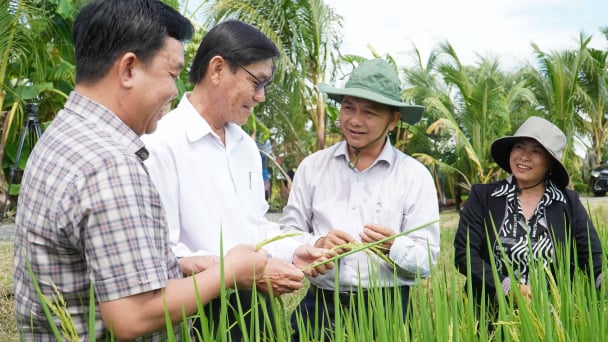
(VAN) Soc Trang's success in rice exports stems from a strategy of developing fragrant and specialty rice cultivation areas and standardizing production toward low-emission practices.
/2025/06/11/1311-5-120811_839.jpg)
(VAN) The pig farming industry is facing the challenge of comprehensive restructuring to meet requirements for quality, safety, traceability, and market expansion both domestically and for export.
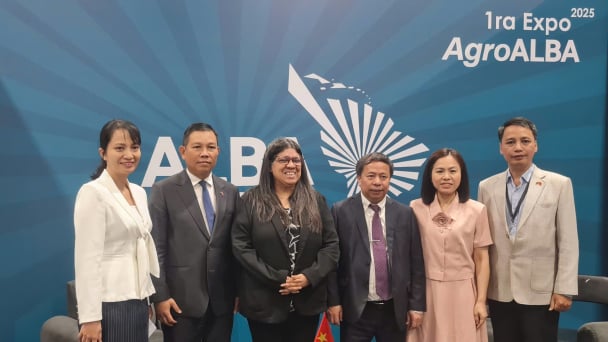
(VAN) Vietnam considers participating in ALGROALBA in order to expand agricultural production, coordinate the assessment and effective exploitation potential land.
/2025/06/05/5314-1-184727_407.jpg)
(VAN) From seemingly worthless fish scales and skin, enzymes and lactic ferments can transform by-products into peptides, opening a sustainable, effective business direction and elevating Vietnamese seafood.
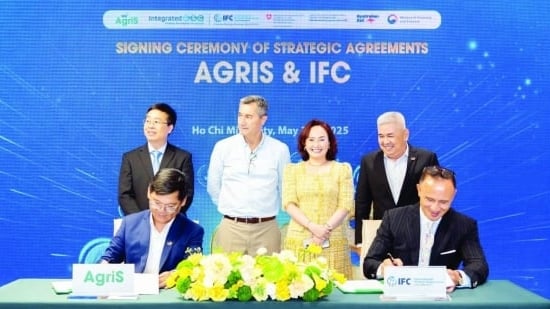
(VAN) TTC AgriS and IFC signed a strategic partnership to develop a sustainable agricultural value chain, aiming to achieve the Net Zero target by 2035.

(VAN) Seafood by-products are opening a new path, combining green growth and technological innovation to enhance the industry's value.